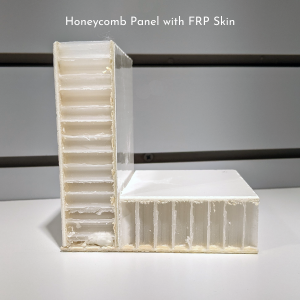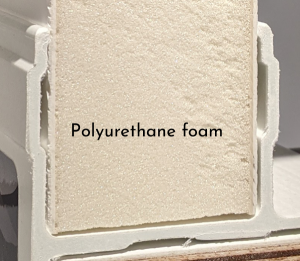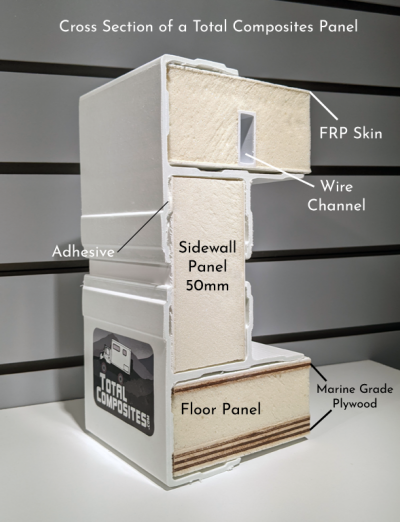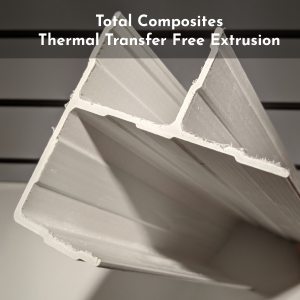Composite Myths DEBUNKED

1.) What others are saying: “Go with honeycomb panels!”
What we say: While we understand the attraction to honeycomb- they are durable by design, we want to be clear with one of their biggest disadvantages. Honeycomb composites offer close to zero insulation.
At Total Composites, we only use a Polyurethane foam core specifically designed for the automotive industry which has an R-value of 5 per inch. Our standard camper offers panels up to 3.23”/84mm thick. This gives an insulation value up to R16. Honeycomb on the other hand is basically just a plastic core material with air pockets. It is also 1/3 heavier than a foam core panel.
 2.) What others are saying: “PIR (Polyisocyanurate) is better than PU (Polyurethane)”
2.) What others are saying: “PIR (Polyisocyanurate) is better than PU (Polyurethane)”
What we say: They are basically the same material. The only difference is that PIR has a slightly higher flame tolerance than our foam. This, however, is insignificant because the foam is enclosed by fibreglass skin that has a B2 rating. If a fire were to break out in the camper, it will make contact with the fibreglass skin first, not the foam. The foam would be the last to be impacted by the fire which is why it is irrelevant in the bigger picture.
 3.) What others are saying: “We’re thermally efficient” (yet they have condensation buildup)
3.) What others are saying: “We’re thermally efficient” (yet they have condensation buildup)
One of the biggest issues most campers face is thermal transfer – also known as cold bridging. Thermal transfer is generated by materials conducting heat/cold through the outside walls- therefore any type of struts, bolts or extrusions made of conductive materials will create condensation on the inside of your camper. This can become a huge issue when water collects in hidden places behind cabinets etc. resulting in decay, mould and bad smells. At Total Composites, our main focus is to build a product that eliminates this issue. We use special techniques to mount cabinets without screws, and by using non-conductive corner extrusions.
 4.) What others are saying: “Choose us because we have Aluminum extrusions with thermal breaks”
4.) What others are saying: “Choose us because we have Aluminum extrusions with thermal breaks”
What we say: Aluminum extrusions are extremely easy and affordable to source in North America hence the vast amount of camper builders using them. The problem with that is the fact that aluminum and FRP(Fiber Reinforced Plastic) composites don’t mix well. Over time and through different temperature exposures, the two materials will begin to separate allowing for water to leak in between the cracks. Once water gets into the extrusions, this begins to cause deterioration in the structural components resulting in long-term damage. Even with a “thermal break” there is still a significant amount of condensation because the materials are still conducting the heat/cold to a certain degree. In addition, there is an added hassle of using a highly toxic primer to prepare the aluminum for proper bonding strength.
At Total Composites we have found the best way to combat this issue is by using our unique fibreglass extrusions. (Only sold in our kits).

